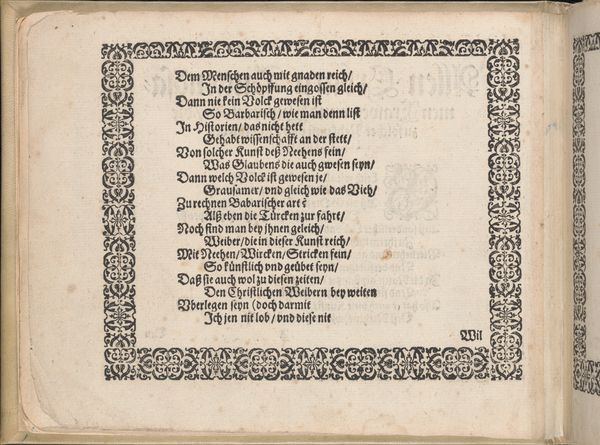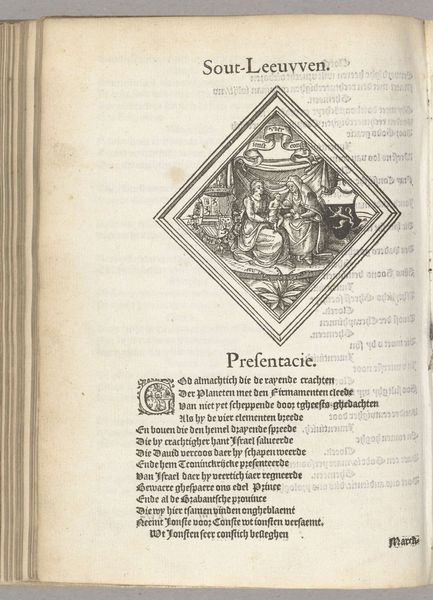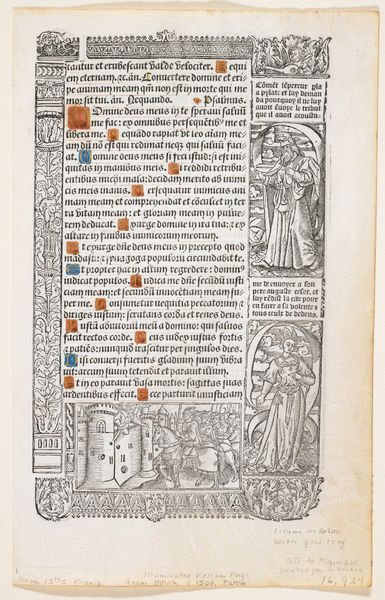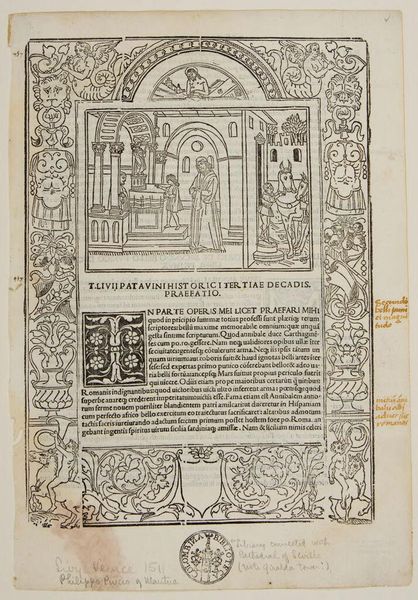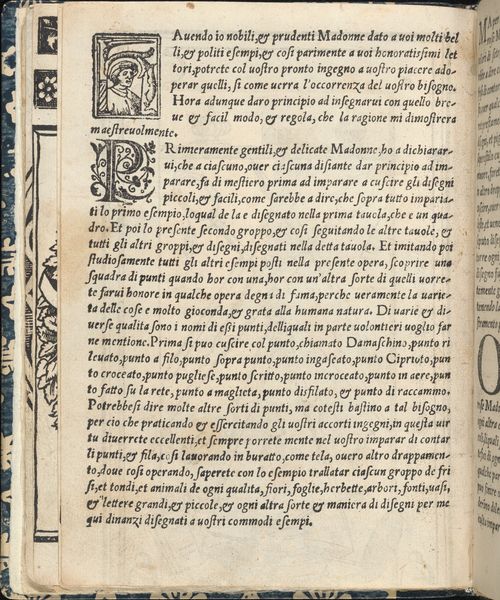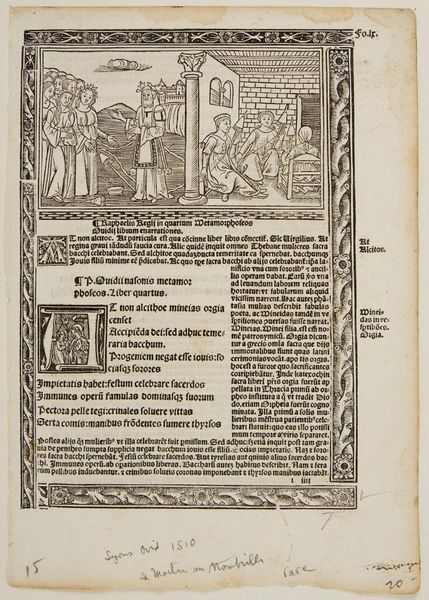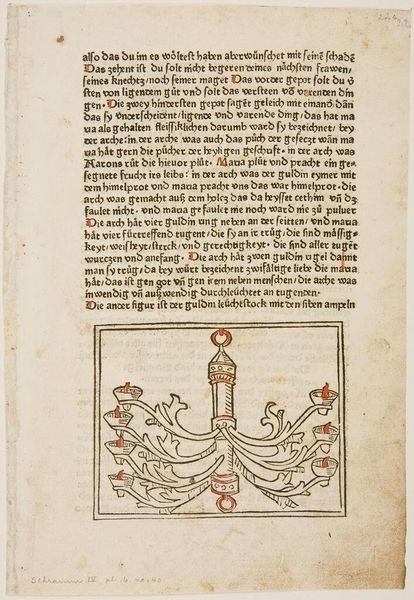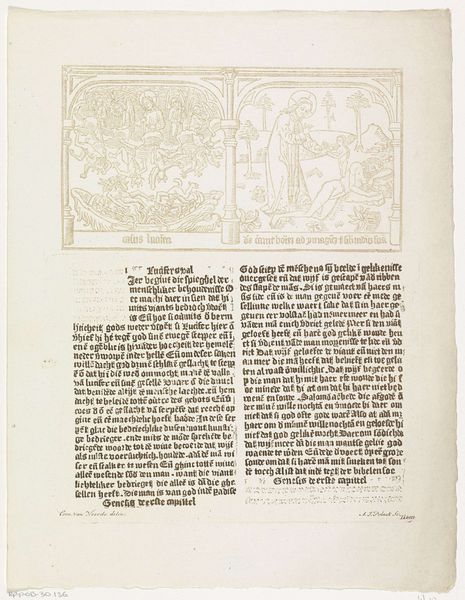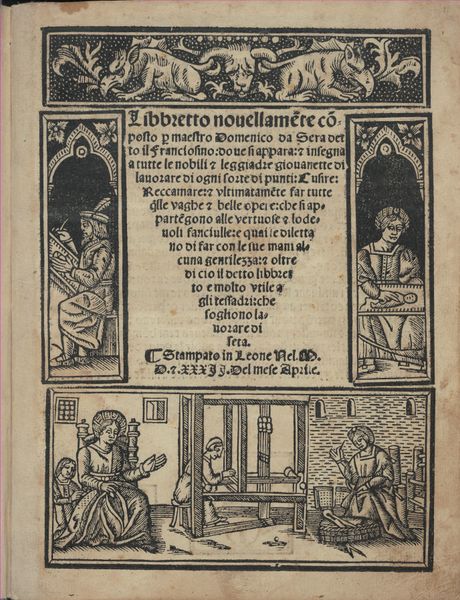
print, woodcut, engraving
# print
#
figuration
#
woodcut
#
history-painting
#
northern-renaissance
#
engraving
Dimensions: Overall: 36 x 26 cm (14 3/16 x 10 1/4 in.) overall (external frame dimensions): 59.7 x 44.5 cm (23 1/2 x 17 1/2 in.)
Copyright: National Gallery of Art: CC0 1.0
Curator: I’d like to focus on this anonymous German woodcut and engraving from around 1475. It's entitled "Christ on the Cross with Pope Pius II." What strikes you when you first look at it? Editor: Well, immediately the stark black lines against the pale paper create a somber, almost brutal mood. The sheer density of the figures and the text feels claustrophobic; a really visceral representation of religious suffering. Curator: Yes, look closely at the process. The artist skillfully combined woodcut for the overall image and engraving for finer details, achieving both bold forms and intricate textures. We must consider the labor involved in creating such a piece, especially considering its likely intended consumption: piety and spiritual reflection. It merges what many at the time saw as a form of reproducible “low art” with the refined skill associated with engraving. Editor: Absolutely, and beyond technique, I see layers of meaning embedded here. We have Christ’s crucifixion at the center, flanked by Mary and John, with Pope Pius II kneeling at the foot of the cross. Placing the Pope, a symbol of religious authority, within this scene implicates the church directly in the narrative of sacrifice, power, and salvation. Who is represented, and who isn't, carries potent symbolic weight related to the intersections of faith, governance, and hierarchy. Curator: Exactly! The materials themselves—wood, metal, ink—would have been readily available, emphasizing the accessibility of the message. But beyond accessibility, they bring into play their own inherent symbolic weight, each step in the process imbuing the final work with complex connotations. The printing press aided wide distribution. Considering the period, this democratization of religious iconography surely had social implications beyond personal piety. Editor: And this democratization meant wider circulation of visual rhetoric related to faith. The arrangement also reinforces specific patriarchal narratives—a white, male Christ figure as the central object of suffering and redemption; male figures, again, predominantly leading these core moments, and the women positioned to his sides. Understanding that power structure—especially its potential exploitation of particular viewers for financial gain via indulgences or other revenue streams—demands further analysis. Curator: It’s truly fascinating how such a relatively simple image embodies a convergence of materials, processes, faith, and social context. Looking beyond iconography at the conditions of its creation illuminates complex relations of making, knowing, and believing. Editor: Right. The interplay of the image with its potential power—as devotional tool and ideological weapon—helps us connect this historical work to ongoing dialogues surrounding faith, politics, representation, and cultural consumption today.
Comments
No comments
Be the first to comment and join the conversation on the ultimate creative platform.
